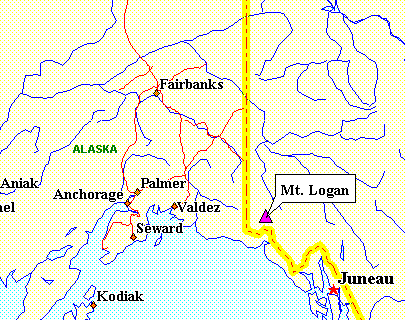Dan and Betty Churchill Exploration Fund
June 8th to June 27th, 2005


 The Arctic represents one of the key regions on Earth in our efforts to document and understand global change. The sensitivity of the Arctic to climate perturbations and the wealth of paleoenvironmental records available from this region justifies the prominent role the Arctic plays in global change research. The Arctic is experiencing changes in atmospheric and oceanic circulation related to natural climate variability and to anthropogenic greenhouse gas/sulfate aerosol forcing. These changes extend from the top of the atmosphere to below 1000 m depth in the ocean and include observations of decreased sea ice cover, a rise in the North Atlantic Oscillation atmospheric circulation index, reduced formation of North Atlantic Deep Water, and warming over the subpolar land areas of Alaska and northwest Canada in winter and spring.
The Arctic represents one of the key regions on Earth in our efforts to document and understand global change. The sensitivity of the Arctic to climate perturbations and the wealth of paleoenvironmental records available from this region justifies the prominent role the Arctic plays in global change research. The Arctic is experiencing changes in atmospheric and oceanic circulation related to natural climate variability and to anthropogenic greenhouse gas/sulfate aerosol forcing. These changes extend from the top of the atmosphere to below 1000 m depth in the ocean and include observations of decreased sea ice cover, a rise in the North Atlantic Oscillation atmospheric circulation index, reduced formation of North Atlantic Deep Water, and warming over the subpolar land areas of Alaska and northwest Canada in winter and spring.
Fieldwork Details
The fieldwork being conducted is an international collaborative effort among groups from UMaine, the University of Ottawa (UO), and the Geological Survey of Canada. The UMaine group will join Dr. C. Zdanowicz (GSC), who has extensive glaciological research experience in the St. Elias Mountains. The entire team plans to spend roughly 1 week at the Divide site, collecting meteorological data and snow chemistry samples. Based on past experience in the area, our overall schedule includes four anticipated weather delay days.